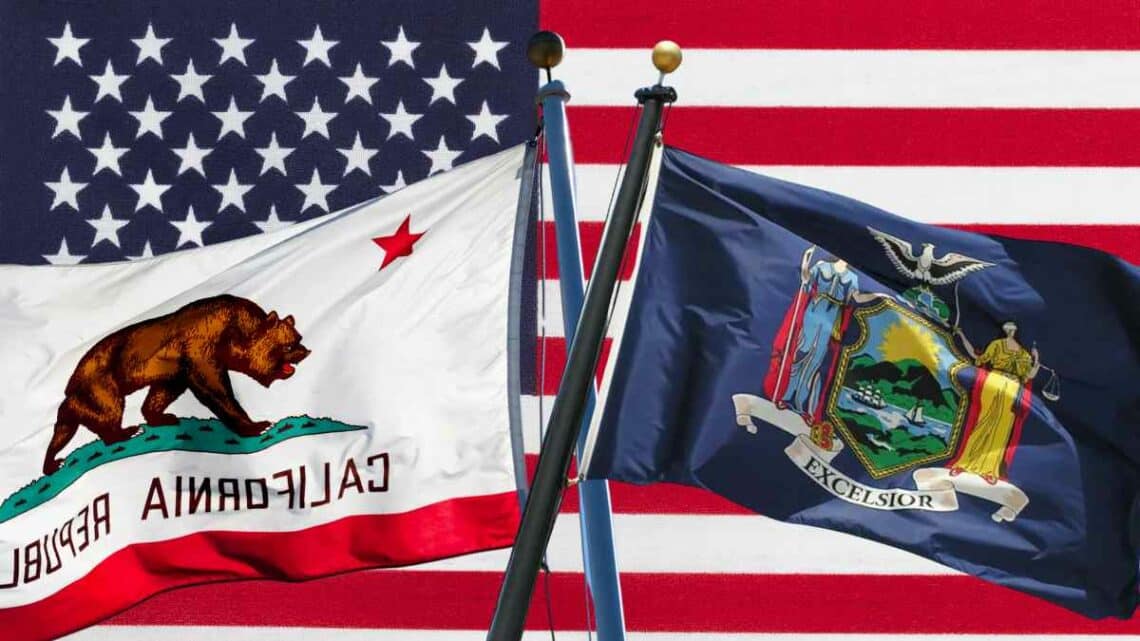In the United States, the federal minimum wage has remained unchanged for more than 10 years. The last adjustment occurred in 2009. This is the longest period without an increase since the implementation of the minimum wage in 1938. Despite this stasis, numerous states have set minimum wages higher than the federal minimum wage, adjusting for cost-of-living increases (COLA) and inflation. In this context, a question arises: what is the highest minimum wage in the United States?
As of January 1, 2024, 23 states have raised their minimum wages. All of them adjusted the amounts for inflation or increases scheduled by state legislation. Four other states implemented additional increases in July and September of this year.
U.S. minimum wage: state by state
Below is a breakdown of the current minimum wage in each state. This list includes California, Texas, Florida and New York. This information is taken from official data provided by the Department of Labor.
- Alabama: $7.25.
- Alaska: $10.85.
- Arizona: $13.85.
- Arkansas: $22.
- California: $15.50.
- North Carolina: $7.25.
- South Carolina: $7.25.
- Colorado: $13.65.
- Connecticut: $15 (increase on July 1 of this year).
- North Dakota: $7.25.
- South Dakota: $10.80.
- District of Columbia: $16.50.
- Delaware: $11.75.
- Florida: $12.00 (increase on September 30).
- Georgia: $7.25.
- Hawaii: $10.10.
- Idaho: $7.25.
- Illinois: $13.
- Indiana: $7.25.
- Iowa: $7.25.
- Kansas: $7.25.
- Kentucky: $7.25.
- Louisiana: $7.25.
- Maine: $13.80.
- Maryland: $13.25.
- Massachusetts: $15.00.
- Michigan: $10.10.
- Minnesota: $10.59.
- Mississippi: $7.25.
- Missouri: $12.00.
- Montana $9.95.
- Nebraska: $10.50.
- Nevada: $11.25 (increase on July 1).
- New Jersey: $14.13.
- New York: $14.20.
- New Hampshire: $7.25.
- New Mexico: $12.00.
- Ohio: $10.10.
- Oklahoma: $7.25.
- Pennsylvania: $7.25.
- Rhode Island: $13.00.
- Tennessee: $7.25.
- Texas: $7.25.
- Vermont: $13.18.
- West Virginia: $8.75.
- Virginia: $12.
- Washington: $15.74.
- Wisconsin: $7.25.
- Wyoming: $7.25.
States with the lowest and highest minimum wage in the U.S.
Currently, there are five states that have not established a minimum wage of their own. They also maintain the federal $7.25 per hour. These states are: Alabama, Louisiana, Mississippi, South Carolina and Tennessee, which record the lowest wage of all.
In contrast, we have Washington, California and Massachusetts. These states have the highest minimum wages of all by far, with an average of $15. Slightly below are New York and New Jersey, with an average of $14.
There is diversity in state policies
As mentioned earlier, the federal minimum wage in the United States has not been updated since 2009. As a result, many states have taken the initiative to make an adjustment to reflect the cost of living. Recall that the COLA is a measure used to adjust Social Security and Supplemental Security Income benefits. Its purpose is to ensure that the purchasing power of these benefits is not affected by inflation. This diversity in state policies highlights the significant differences in working conditions across the country.
For more information on the minimum wage in the different states, please consult the official source used to prepare this note. On this occasion, the information has been extracted from the U.S. Department of Labor website, which compiles all the updated data on labor activity in the country.






